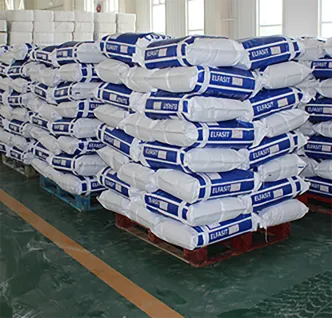
Дек . 17, 2024 19:48 Back to list
rdp powder uses
The Versatile Applications of RDP Powder
RDP, or Redispersible Polymer Powder, has garnered significant attention in various industries due to its unique properties and versatile applications. It is primarily used as a binder in dry mixed construction materials, enhancing both workability and performance. In this article, we will explore the uses of RDP powder, its benefits, and its impact on construction and other sectors.
Understanding RDP Powder
RDP is a water-soluble polymer that, upon redispersion in water, forms a viscous adhesive phase. This characteristic makes it an ideal addition to different types of building materials, such as tile adhesives, grouts, dry-mix mortars, and plastering compounds. The powder is produced through a process of spray drying, which allows it to retain its properties post-drying. When mixed with water, it reverts to its original polymer form, creating a strong bond.
Applications in Construction
1. Tile Adhesives RDP powder is widely used in tile adhesives, allowing for strong bonding between tiles and substrates. It improves adhesion properties, water resistance, and flexibility, making it suitable for both interior and exterior applications. This is particularly beneficial in areas exposed to moisture, such as bathrooms and kitchens.
2. Dry-Mix Mortars In dry-mix mortar applications, RDP enhances the performance characteristics of the final product. It provides improved workability, making the mortar easier to spread and manipulate. Additionally, RDP contributes to increased durability and resistance to cracking, which is crucial for the longevity of construction materials.
3. Plastering Compounds RDP is also utilized in various plastering compounds. It helps to achieve a smooth finish and facilitates easier application. The use of RDP in plaster not only enhances adhesion but also imparts water resistance and flexibility, reducing the risk of cracking over time.
4. Rendering and Insulation In rendering applications, RDP allows for improved adherence of renders to different substrates, including concrete and brick. It is also used in external thermal insulation composite systems (ETICS), providing an additional layer of insulation while ensuring that the materials remain intact under various weather conditions.
Benefits of RDP Powder
The incorporation of RDP powder into construction materials offers multiple benefits
rdp powder uses

- Enhanced Adhesion One of the key advantages of RDP is its ability to improve the adhesive properties of mixtures, which is crucial for ensuring the longevity and stability of the bonded materials.
- Flexibility and Durability RDP contributes to the flexibility of the final product, allowing it to withstand stress and movement without cracking. This is especially important in dynamic environments, such as those subjected to temperature fluctuations or seismic activity.
- Water Resistance RDP's water-resistant properties are significant for construction applications exposed to moisture. By repelling water, it helps protect structures from mold, mildew, and degradation over time.
- Ease of Use The powder form of RDP is easy to handle and mixes well with various dry mix formulations, making it a convenient choice for manufacturers and contractors alike.
Other Industries Utilizing RDP Powder
Beyond the construction sector, RDP powder finds applications in other fields
- Adhesives and Sealants In the adhesive industry, RDP is added to formulations to improve bonding strength and flexibility, especially in products designed for outdoor use.
- Paints and Coatings RDP is used in the production of paints and coatings to enhance adhesion to surfaces, improve durability, and create smoother finishes.
- Automotive and Consumer Goods In automotive manufacturing and the production of consumer goods, RDP helps improve the quality and performance of materials, ensuring longevity and reliability.
Conclusion
In conclusion, RDP powder is a remarkable additive with a wide range of applications across various industries, particularly in construction. Its ability to enhance adhesion, flexibility, and durability makes it a valuable component in many formulations. As industries continue to seek out materials that perform better and last longer, the use of RDP powder is likely to grow, innovating the way we construct and develop products. Whether for high-performance tile adhesives or durable plastering compounds, RDP is poised to play a pivotal role in the future of material sciences.
-
Versatile Hpmc Uses in Different Industries
NewsJun.19,2025
-
Redispersible Powder's Role in Enhancing Durability of Construction Products
NewsJun.19,2025
-
Hydroxyethyl Cellulose Applications Driving Green Industrial Processes
NewsJun.19,2025
-
Exploring Different Redispersible Polymer Powder
NewsJun.19,2025
-
Choosing the Right Mortar Bonding Agent
NewsJun.19,2025
-
Applications and Significance of China Hpmc in Modern Industries
NewsJun.19,2025







